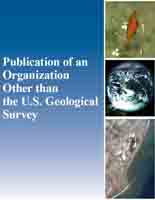Bat species diversity within the United States is greatest in the Southwest, with approximately 30 species present. At least 16 of these bat species hibernate and are susceptible to white-nose syndrome (WNS), which is caused by the fungus Pseudogymnoascus destructans. Since 2006, millions of bats from 35 U.S. states and 7 Canadian provinces have died from WNS. In previous studies of external surfaces of bats sampled from southwestern states, Actinobacteria were detected that were shown to have antifungal properties against P. destructans in laboratory testing. These studies motivated us to expand our research to sites that represent possible gateways for P. destructans to enter the Southwest so that we could establish a baseline of bat microbiota before the arrival of WNS. We surveyed for the presence of bats and their external microbiota at 3 national parks and monuments located in southeastern Colorado and northeastern New Mexico. Our results document new occurrence records of bat species and their external bacteria at each sampling location. Additionally, we provide insight on the composition of bat external microbiota in the absence of P. destructans, while revealing information about the Streptomyces and other possible native defenses of bats against P. destructans at a gateway into the Southwest.
Southwestern bats and their external bacteria
Links
- More information: Publisher Index Page (via DOI)
- Download citation as: RIS | Dublin Core
Abstract
| Publication type | Article |
|---|---|
| Publication Subtype | Journal Article |
| Title | Southwestern bats and their external bacteria |
| Series title | Western North American Naturalist |
| DOI | 10.3398/064.081.0206 |
| Volume | 81 |
| Issue | 2 |
| Year Published | 2021 |
| Language | English |
| Publisher | BioOne |
| Contributing office(s) | Fort Collins Science Center |
| Description | 18 p. |
| First page | 207 |
| Last page | 224 |


